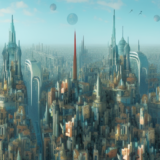
In the continuous quest to explore how artificial intelligence grasps and generates different artistic styles, we again turned to Stable Diffusion, leveraging the capabilities of DreamStudio. This time, however, our approach was twofold: a comparative analysis between Stable Diffusion 1.5 (SD 1.5) and Stable Diffusion 2.1 (SD 2.1). In both iterations, the same styles were tested, enabling us to discern how different versions of the AI model fared with the same prompts.
Estimated reading time: 2 minutes

After bidding adieu to a long winter, we found ourselves on a new endeavor. This time, we stepped into a time machine, embarking on an artistic journey through history, from the shadowy corners of ancient caves to the sleek lines of modern minimalism. With the aid of Stable Diffusion, we decided to delve into a diverse array of art styles, testing the AI’s proficiency and its artistic flexibility.
Estimated reading time: 3 minutes

Art is a diverse and multi-layered field of study that relies heavily on both visual and textual analysis. While the visuals are, of course, the main focus, it is through text that we often contextualize, critique, and interpret what we see. The rise of artificial intelligence (AI) in the form of text generation tools, such as OpenAI’s GPT models, offers new and exciting opportunities in the field of art study. Here’s how:
Estimated reading time: 3 minutes


